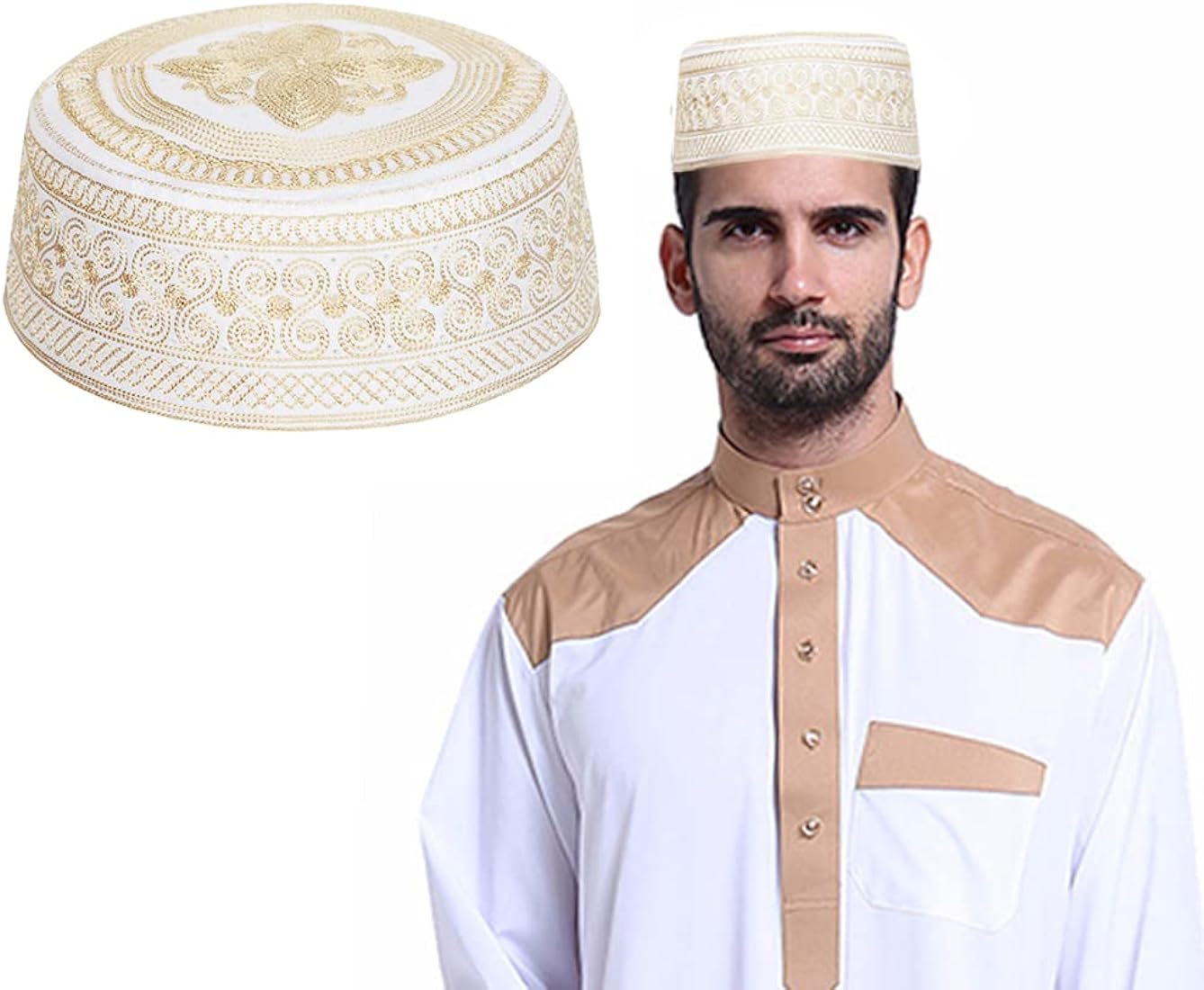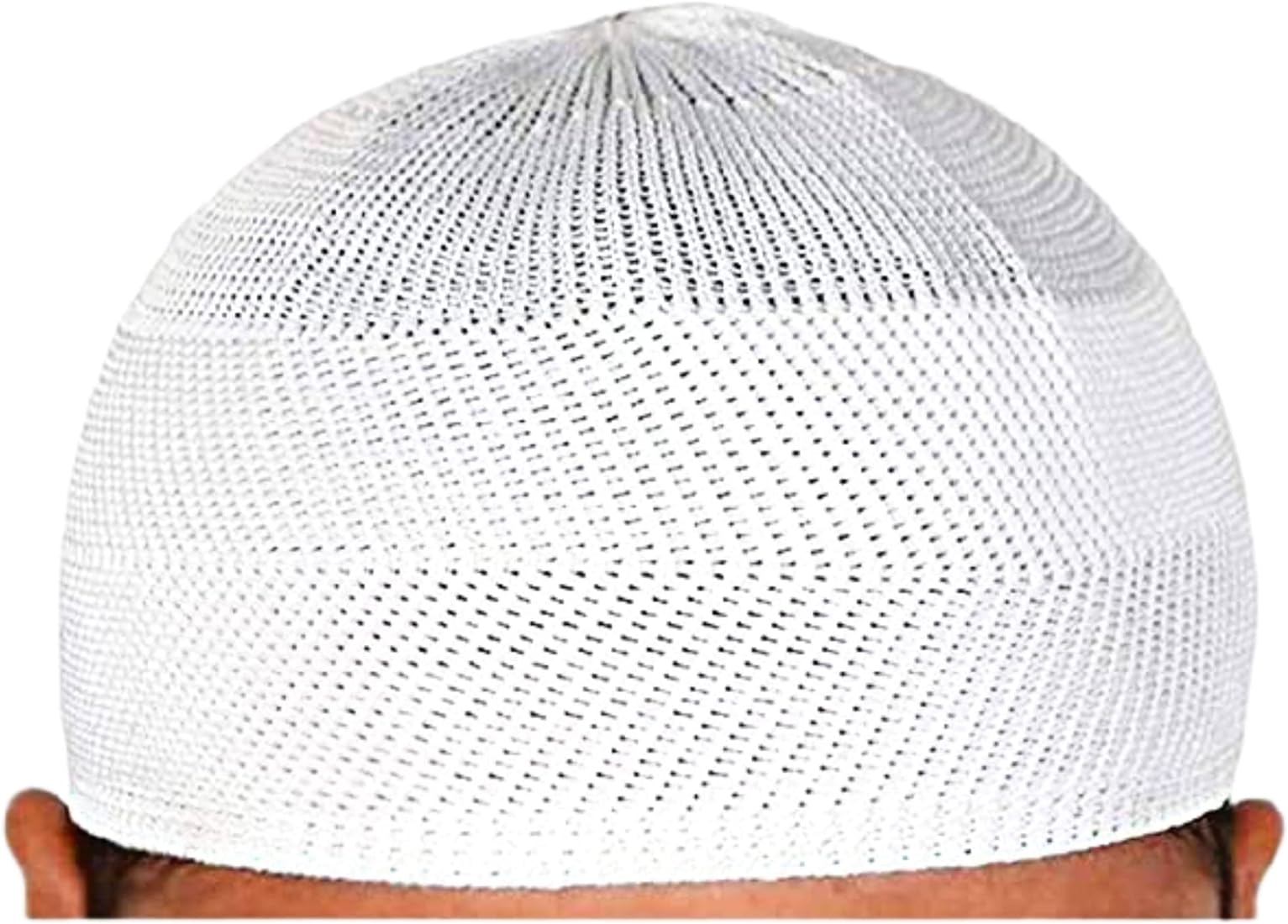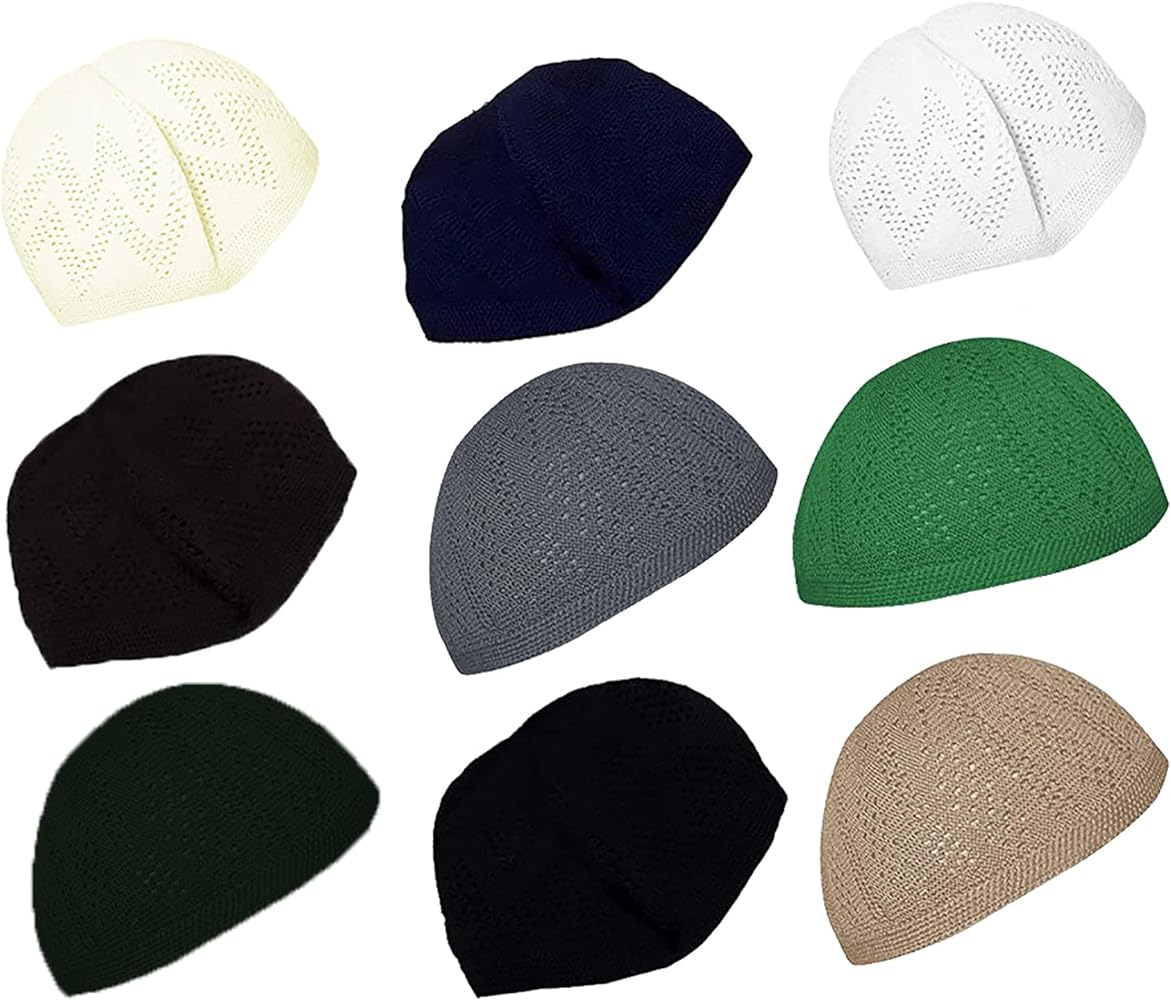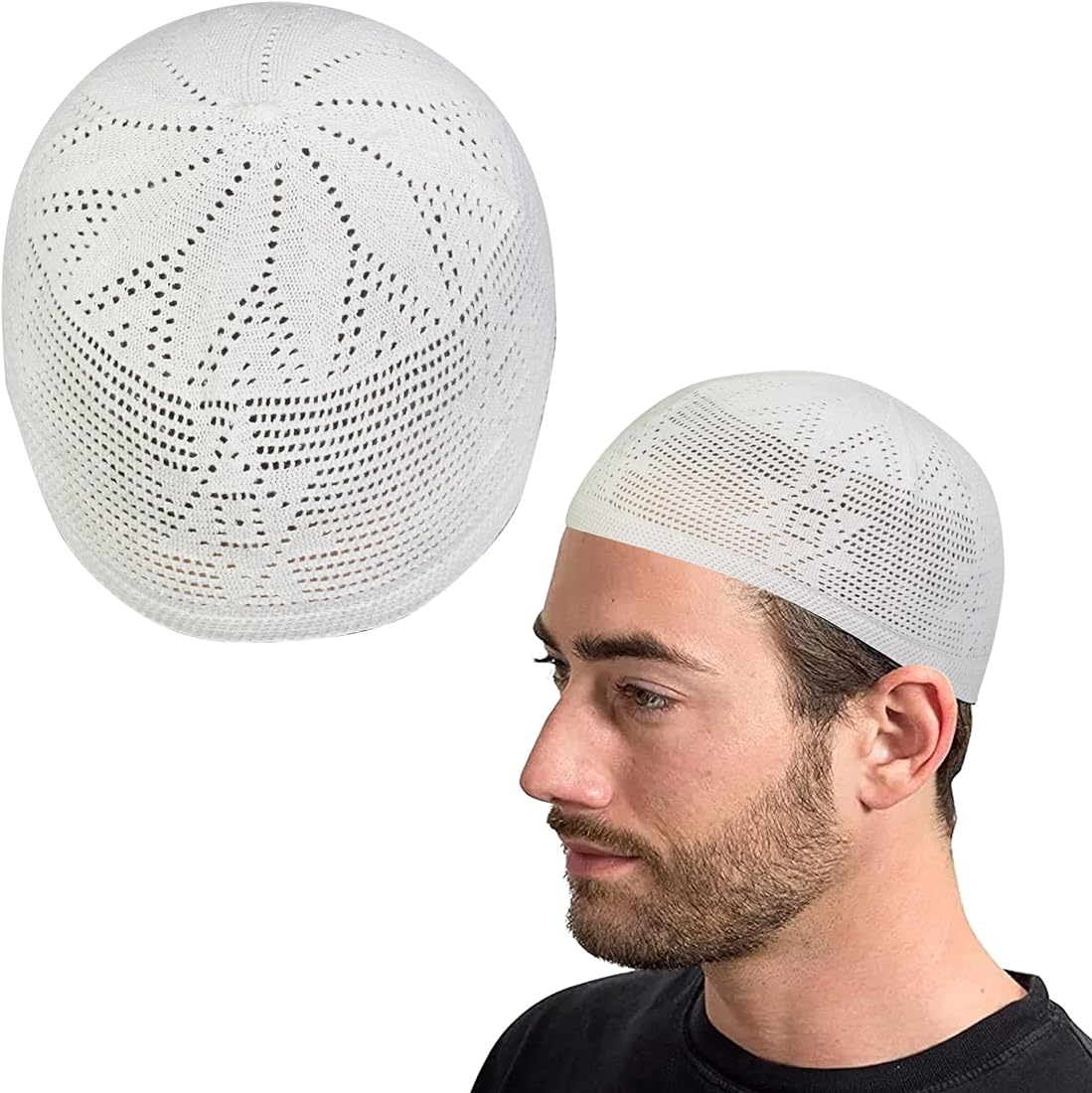Introduction
The Muslim cap, often referred to as a “kufi” or “taqiyah,” holds profound cultural, religious, and social significance within Muslim communities worldwide. Beyond its functional purpose as a head covering, the Muslim cap embodies a rich tapestry of tradition, identity, and evolving fashion trends.

1. Tradition and Religious Symbolism:
The Muslim cap traces its roots back to the early Islamic period, where it was worn by the Prophet Muhammad and his companions. Its simplicity reflects the modesty and humility valued in Islamic teachings. As such, wearing the cap is often seen as an act of piety and adherence to religious tradition.
2. Identity and Cultural Expression:
In addition to its religious significance, the Muslim cap serves as a marker of cultural identity and belonging. Across diverse Muslim communities, variations of the cap exist, each reflecting regional customs, historical influences, and personal preferences. Whether embroidered with intricate patterns or adorned with tassels, the cap becomes a means of self-expression and connection to one’s heritage.
3. Fashion Trends and Modern Adaptations:
While rooted in tradition, the Muslim cap has also evolved with contemporary fashion trends. In recent years, there has been a resurgence of interest in traditional attire, leading to innovative designs that blend heritage with modern aesthetics. Designers have experimented with different materials, colors, and styles, catering to a diverse range of tastes and preferences.
4. Cultural Versatility and Global Appeal:
One of the remarkable aspects of the Muslim cap is its versatility and global appeal. Beyond its significance within Muslim-majority countries, the cap has gained popularity in multicultural societies as a symbol of diversity and inclusion. It is not uncommon to see individuals of various backgrounds wearing the cap as a gesture of solidarity or respect for Islamic traditions.
5. Social and Political Significance:
In some contexts, the Muslim cap carries social and political significance, serving as a visible marker of religious identity and resistance against discrimination. In regions where Muslims face marginalization or persecution, wearing the cap can be an assertion of one’s rights and a symbol of resilience in the face of adversity.
6. Gender Dynamics and Inclusivity:
Traditionally associated with men, the Muslim cap has also become increasingly embraced by women, challenging gender norms and promoting inclusivity within Muslim communities. Women’s caps, often adorned with embellishments or styled in unique ways, offer a platform for self-expression while honoring religious modesty.
7. Interfaith Dialogue and Understanding:
As a visible symbol of Islamic identity, the Muslim cap has the potential to foster interfaith dialogue and understanding. By engaging in respectful conversations about its significance and history, individuals from different religious backgrounds can cultivate empathy and mutual respect, transcending cultural barriers and building bridges of solidarity.
8. Preserving Cultural Heritage:
In an era of globalization, preserving the cultural heritage associated with the Muslim cap is paramount. Efforts to document its history, promote traditional craftsmanship, and safeguard its authenticity ensure that future generations can continue to appreciate its significance within the tapestry of Islamic culture.

9. Social Integration and Community Identity:
The Muslim cap plays a pivotal role in fostering a sense of community and social integration within Muslim societies. It is often worn during communal prayers at mosques, signifying unity among believers. The cap is also a common sight during religious festivals, such as Eid al-Fitr and Eid al-Adha, where it serves as a symbol of shared faith and collective identity. This communal aspect of the cap reinforces the bonds that unite Muslims across different regions and cultures.
10. Role in Religious Education and Spiritual Development:
For many Muslims, the cap is introduced at an early age, particularly for young boys attending religious classes or madrassas. It is often used as a visual cue to instill religious values and a sense of discipline. The cap’s presence during religious instruction underscores its role in shaping the spiritual development of young Muslims. By wearing the cap, students are reminded of the importance of prayer, humility, and obedience to religious teachings.
11. Global Influence and Cultural Exchange:
The Muslim cap has had a noticeable impact on global fashion, with designers and brands incorporating elements of the cap into their collections. This cross-cultural exchange has led to a broader acceptance and appreciation of Islamic aesthetics in the fashion industry. The cap’s adaptability allows it to be paired with a variety of outfits, from traditional thobes and kaftans to modern streetwear. This trend reflects the growing interest in cultural diversity and the blending of traditional and contemporary styles.
12. Sustainability and Artisanal Craftsmanship:
The Muslim cap is often crafted using traditional artisanal techniques, which contribute to its unique charm and sustainability. Handmade caps, particularly those featuring intricate embroidery or handwoven fabrics, are valued for their craftsmanship and durability. This emphasis on quality and sustainability aligns with the broader movement toward ethical fashion and slow production. Supporting artisanal craftsmanship also helps preserve traditional skills and provides economic opportunities for local communities.

13. The Muslim Cap in Interfaith Settings:
In multicultural and interfaith contexts, the Muslim cap serves as a bridge for dialogue and understanding. It can be a conversation starter, allowing individuals from different religious backgrounds to learn about Islamic traditions and values. The cap’s symbolism can foster empathy and respect, breaking down stereotypes and promoting harmonious coexistence. By wearing the cap in public spaces, Muslims contribute to a more inclusive society where religious diversity is celebrated.
14. The Cap as a Symbol of Resistance and Solidarity:
In some regions, the Muslim cap has become a symbol of resistance against oppression and discrimination. When Muslims face religious intolerance or persecution, wearing the cap can be an act of defiance and solidarity. This aspect of the cap’s significance highlights its role in advocating for religious freedom and human rights. It serves as a reminder of the struggles and resilience of Muslim communities throughout history.
15. The Future of the Muslim Cap:
As we look to the future, the Muslim cap will continue to evolve in response to changing cultural and social dynamics. New designs and materials will emerge, influenced by technological advancements and global fashion trends. However, the core values associated with the cap—modesty, humility, and religious devotion—will remain steadfast. The cap will continue to be a powerful symbol of Islamic identity, fostering unity and promoting cross-cultural understanding in an increasingly interconnected world.

In conclusion
The Muslim cap stands as more than just a piece of clothing; it is a symbol of tradition, identity, and resilience. Whether worn for religious observance, cultural expression, or fashion statement, the cap serves as a tangible link to the rich tapestry of Islamic heritage and a testament to the diversity and resilience of Muslim communities worldwide.

